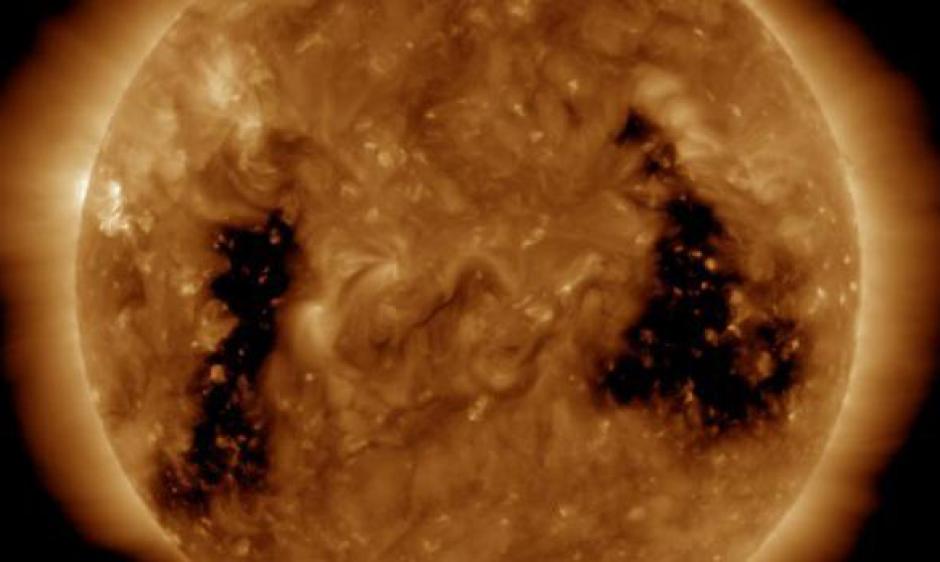
According to NOAA’s Space Weather Prediction Center (SWPC), a G1-class geomagnetic storm is forecast to impact the planet
late on Saturday, January 15 and on Sunday, January 16. In the latest update from the SWPC, they say the area of impact will primarily be poleward of 60 degrees Geomagnetic Latitude. In this region, weak power grid fluctuations can occur on Earth. In space, minor impact on satellite operations are possible. Elsewhere, Mother Nature may light up the skies more south than usual; aurora could be visible at high latitudes across the northern tier of the United States, such as northern Michigan and Maine.
While a significant winter storm is expected to unfold in portions of the eastern U.S. on Sunday too, there is no direct relationship between this space weather event and the Earth weather event.
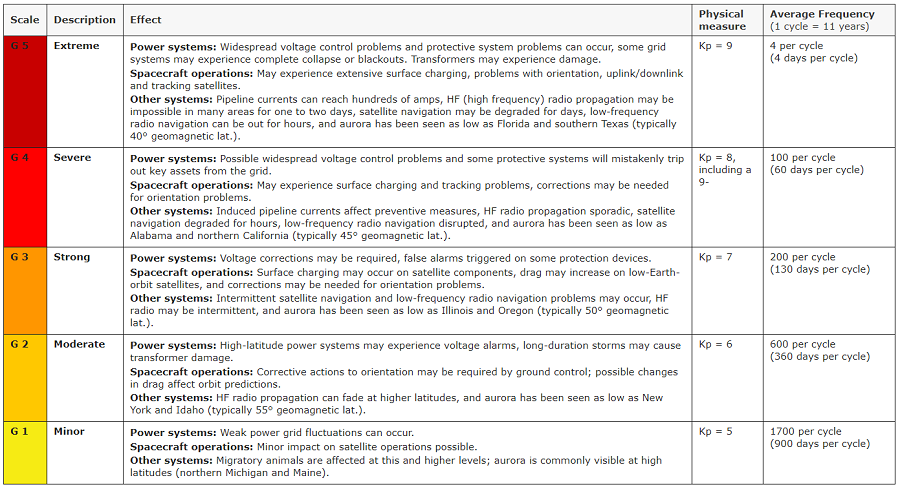
In the latest Space Weather Forecast Discussion, the SWPC writes, “Solar wind parameters are expected to continue at background levels on January 13-14 as ambient solar wind conditions persist. Enhanced conditions are expected late on January 15 as a recurrent, negative-polarity coronal hole high speed stream becomes geoeffective (CH HSS).” They add, “Late on January 15, G1 (Minor) geomagnetic storm conditions become likely due to the arrival of the aforementioned coronal hole.”
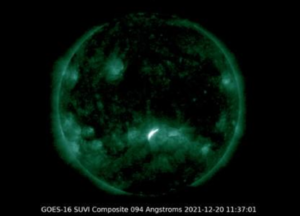
Coronal holes can develop at any time and location on the Sun, but are more common and persistent during the years around solar minimum. Coronal holes are most prevalent and stable at the solar north and south poles; but these polar holes can grow and expand to lower solar latitudes. It is also possible for coronal holes to develop in isolation from the polar holes; or for an extension of a polar hole to split off and become an isolated structure. Persistent coronal holes are long-lasting sources for high speed solar wind streams, also known as “CS HSS”. As the high speed stream interacts with the relatively slower ambient solar wind, a compression region forms, known as a co-rotating interaction region (CIR). According to the SWPC, from the perspective of a fixed observer in interplanetary space, the CIR will be seen to lead the CH HSS.
Strong CIRs and the faster CH HSS can impact Earth’s magnetosphere enough to cause periods of geomagnetic storming to the G1-G2 (Minor to Moderate) levels; although rarer cases of stronger storming may also occur.
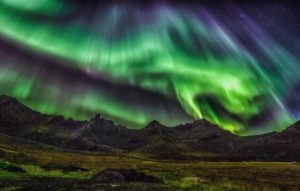
NOAA forecasters analyze a variety of solar data from spacecraft to determine what impacts a geomagnetic storm could produce. If Earth is experiencing the effects of a coronal hole and a coronal mass ejection is forecasted to impact Earth, the combined effects could result in a more significant impact and more intense geomagnetic storming. Analyzing data from the DSCOVER and ACE satellite is one way forecasters can tell when the enhanced solar wind from a coronal hole is about to arrive at Earth. A few things they look for in the data to determine when the enhanced solar wind is arriving at Earth:
• Solar wind speed increases
• Temperature increases
• Particle density decreases
• Interplanetary magnetic field (IMF) strength increases
While these solar events can help illuminate the sky with stunning aurora, they can also do considerable harm to electronics, electrical grids, and satellite and radio communications.
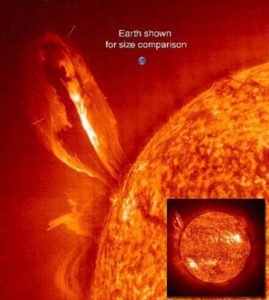
The 1859 incident, which occurred on September 1-2 in 1859, is also known as the “Carrington Event.” This event unfolded as powerful geomagnetic storm struck Earth during Solar Cycle 10. A CME hit the Earth and induced the largest geomagnetic storm on record. The storm was so intense it created extremely bright, vivid aurora throughout the planet: people in California thought the sun rose early, people in the northeastern U.S. could read a newspaper at night from the aurora’s bright light, and people as far south as Hawaii and south-central Mexico could see the aurora in the sky.
The event severely damaged the limited electrical and communication lines that existed at that time; telegraph systems around the world failed, with some telegraph operators reporting they received electric shocks.
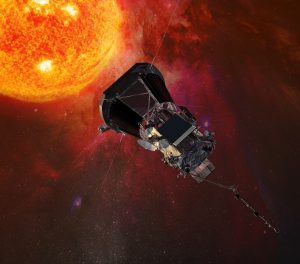
A June 2013 study by Lloyd’s of London and Atmospheric and Environmental Research (AER) in the U.S. showed that if the Carrington event happened in modern times, damages in the U.S. could exceed $2.6 trillion, roughly 15% of the nation’s annual GDP.
While typically known for their weather forecasts, the National Oceanic and Atmospheric Administration (NOAA) and its National Weather Service (NWS) is also responsible for “space weather.” While there are private companies and other agencies that monitor and forecast space weather, the official source for alerts and warnings of the space environment is the Space Weather Prediction Center (SWPC). The SWPC is located in Boulder, Colorado and is a service center of the NWS, which is part of NOAA. The Space Weather Prediction Center is also one of nine National Centers for Environmental Prediction (NCEP) as they monitor current space weather activity 24/7, 365 days a year.

Image: NASA/Mary Pat Hrybyk-Keith